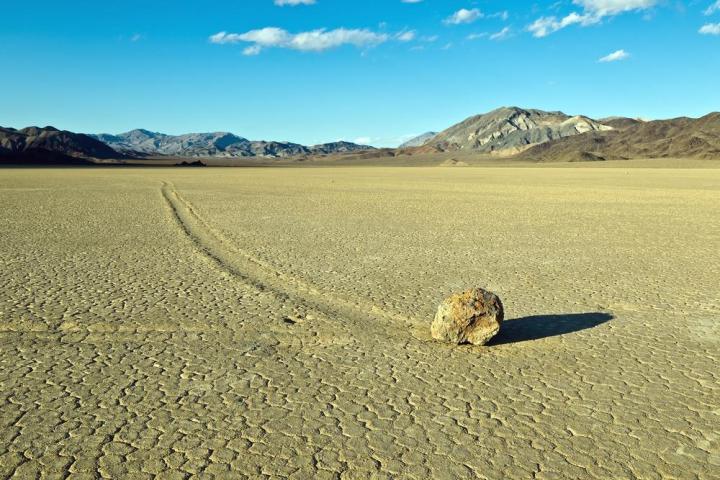
People have been studying the rocks since the early 1900’s, and theories about how they move have ranged from the paranormal/extraterrestrial, to more scientifically-grounded speculation — but up until now, there hasn’t been any concrete proof of how they sail across the desert floor. This lack of empirical evidence is largely due to the fact that the rocks move so slowly and sporadically (sometimes staying stationary for years, then moving a few feet seemingly overnight) that monitoring their movement is rather difficult — especially in the harsh, unforgiving environment of Death Valley.
But now, thanks to time-lapse photography, weatherproof camera equipment, and a fair bit of luck; researchers have finally caught the stones in the act and solved the centuries-old mystery of how they move.
Prior to this evidence, one of the most scientifically-sound theories was that the sailing stones are pushed across the playa by a phenomenon known as an ice shove — an event that occurs when wind and temperature differences create ice sheets that push things across a landscape. This theory, despite being one of the more viable explanations, was difficult to prove, since Death Valley –one of the hottest, driest places in North America– rarely freezes over.
It does happen though. Oceanographer Richard Norris of the Scripps Institution of Oceanography and his cousin, engineer James Norris of Interwoof in Santa Barbara, managed to catch the phenomenon on camera, and in the process, proved that ice shoves are what cause the infamous sailing stones to travel.
Occasionally, during cold winter months, moisture will collect and form shallow ponds in Racetrack Playa and sub-zero temperatures will cause these ponds to freeze. Later in the day, when the sun rises and the weather warms up, these frozen ponds will fracture and break apart as the surface ice begins to melt. As the newly-liquified water flows across the ground, it moves large ice chunks along with it. Collisions between these massive ice sheets and the stones on the desert floor are what propel them along the ground, causing them to leave tracks. Case closed.
Check out the video below for a more in-depth explanation from Norris himself:




